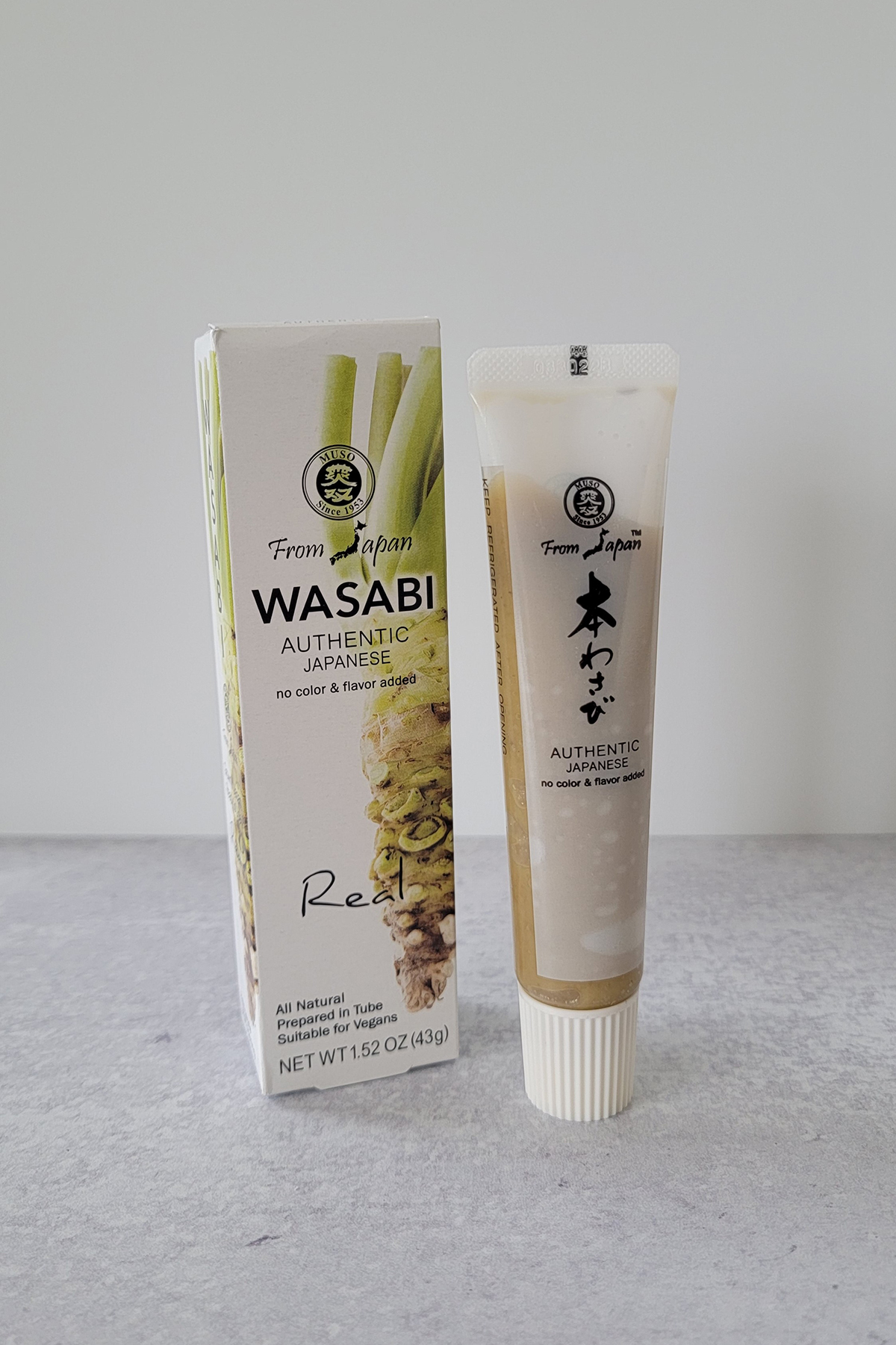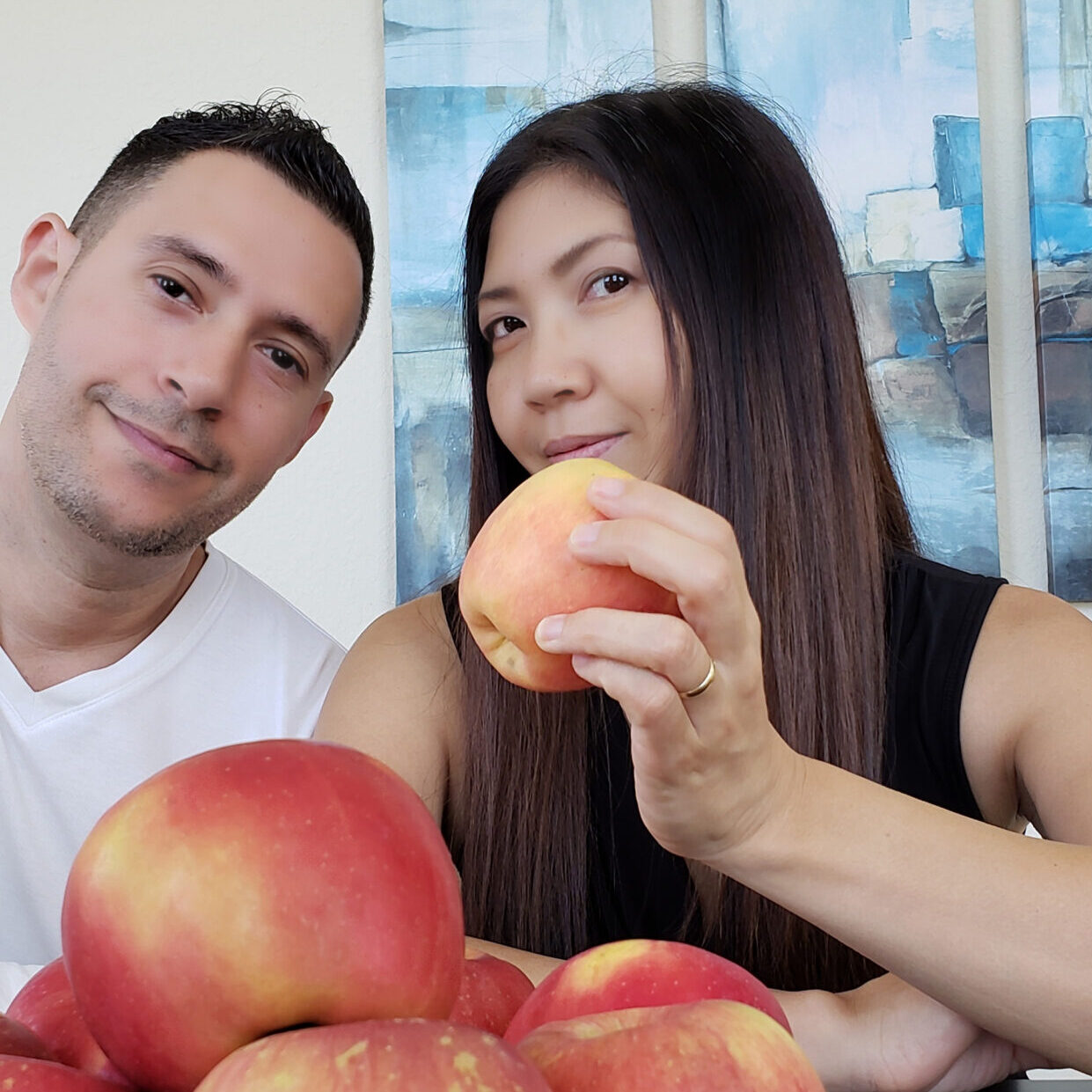Last Updated on January 25, 2023
Wasabi (Japanese Horseradish) might be one of the most known Japanese condiments which you have probably seen on the side of sushi. This iconic Japanese condiment isn’t just for sushi also, there are some different types of wasabi you can buy. Wasabi is widely available so you can easily add to your vegan Japanese pantry!
What’s Wasabi?
Wasabi [わさび or 山葵] is simply a Japanese horseradish.
When we think of wasabi, most of us picture the green paste on the side of sushi. Wasabi is actually a plant and the part we typically eat with sushi is the root (rhizome) of wasabi plant.
The Japanese horseradish (wasabi) has a light green flesh in contrast to the western one which has a white flesh. The taste and the aroma of the Japanese horseradish or wasabi are quite different from the western one as well. Wasabi is more aromatic with an intense kick that stimulates the back of your nose while the western horseradish has more pungent radish-like smell and spiciness that’s less intense than the wasabi.
I’ve watched a documentary of wasabi before and discovered that wasabi plants only grow in clean and relatively cold water under a certain climate (stable and no harsh weather.)
In Japan, Nagano prefecture and Shizuoka prefecture have a large production of wasabi plants. Yet, most wasabi that’s commercially available may not be a “genuine” wasabi. What do I mean by that? I’ll explain a little bit.
Types of Wasabi
There are three different types of wasabi that you may able to find.
- Fresh wasabi root
- “Real” wasabi
- “Fake” wasabi
Fresh Wasabi
The only one you could consider fresh or genuine wasabi is the wasabi you’d directly grate from the wasabi rhizome. Freshly grated wasabi is typically served at luxurious traditional sushi restaurants. Occasionally, you may be able to find one at grocery stores in Japan and grate at home.
Real Wasabi
Now, “real wasabi” or “Hon-Wasabi [本わさび]” in Japanese, is referred to the wasabi products that are made with fresh Japanese wasabi plants.
But keep in mind that real wasabi products can be made with other ingredients including the western horseradish. In some cases, other additives such as stabilizers, colors and preservatives etc. You can always check a full list of ingredients on the package.
Real wasabi products may come in a paste form (neri-wasabi [練りわさび]) or a powder form (kona-wasabi [粉わさび]).
Fake Wasabi
Let’s just call all the other type of wasabi products (not the fresh or the real wasabi) as “fake wasabi.”
Obviously, fake wasabi isn’t labeled as “fake” and rather appears to be real wasabi. But you can easily spot them by reading the ingredients. This type of wasabi has no actual fresh Japanese wasabi plant in it. In other words, they are made with western horseradish with added green colors and flavors etc.
Fake wasabi may also come in a paste form or a powder form.
Taste of Wasabi
The iconic taste of wasabi is the pungency that hits the back of your nose as soon as you eat it. Most wasabi products, whether the real wasabi or imitation one, have the same “wasabi effect” to it.
On the other hand, the fresh wasabi grated from the wasabi rhizome is milder and less intense. Also, the real wasabi plant root activates the pungency by grating.
Aroma of Wasabi
The aroma of the most wasabi products may have a presence of the western horseradish smell because chances are it’s made with one.
On the contrary, fresh wasabi has a fresh and sophisticated aroma to it.
How to Enjoy Wasabi
The most common way to enjoy wasabi is to serve with sushi. But there are other ways to incorporate wasabi to your cooking.
Some examples are:
- Make salad dressing
- Mix with vegan mayo
- Top it with chilled tofu
- Condiment for cold soba noodles
- Condiment for grilled tofu
- Condiment for natto
When I make Japanese potato salad, I often replace Japanese mustard for wasabi. It gives a nice kick in the background. Generally, wasabi works very well with soy sauce-based food.
I also use wasabi to flavor the avocado for my wasabi truffle oil avocado toast.
You can be creative and discover your new favorite ways to enjoy the wasabi!
Where to Find Wasabi (Japanese Horseradish)
I use the wasabi from Gold Mine Natural Foods. This wasabi is made with Japanese wasabi plant (so it’s considered hon-wasabi or real wasabi) and it has no added color and flavor.









![LINGUINE WITH KALE & LEMON CAPER SAUCE
[ケール、レモン、ケイパーのリングイネ(ヴィーガン)]
By @plantbased_matters
Recipe at plantbasedmatters.net
Here is one of my best vegan pasta creations!
Linguine with Kale & Lemon Caper Sauce is a lemon-aroma-filled light pasta with kale and capers. Don't you love the combination of lemon and capers?
If you're new here, you may think I'm all Japanese/Asian food, but my non-Asian pasta recipes are hidden gems of my recipe collections 🤣 I can't believe how good the Linguine with Kale & Lemon Caper Sauce tastes especially with a drizzle of Meyer Lemon Olive Oil.
Enjoy!](https://plantbasedmatters.net/wp-content/plugins/instagram-feed/img/placeholder.png)